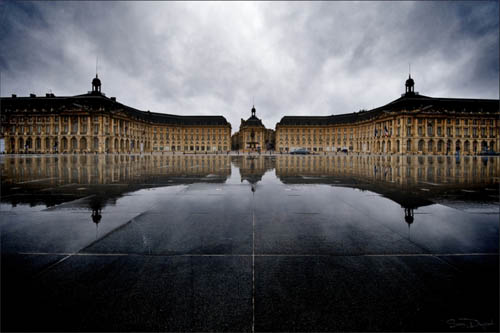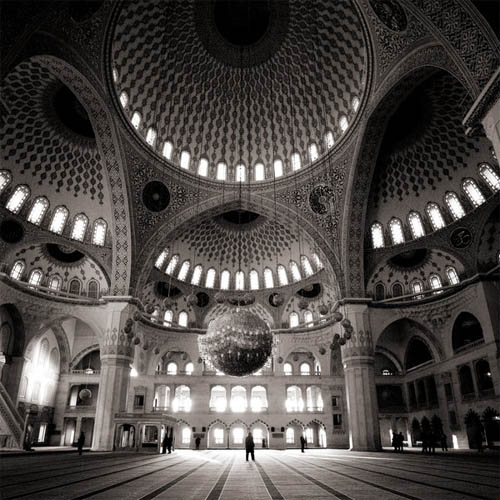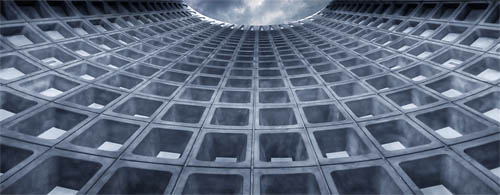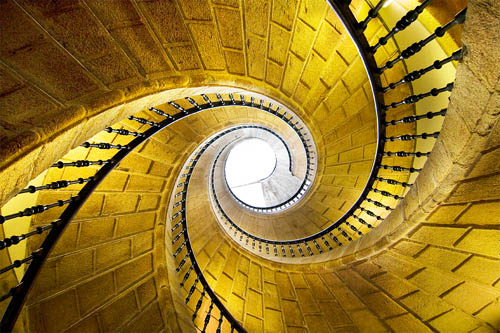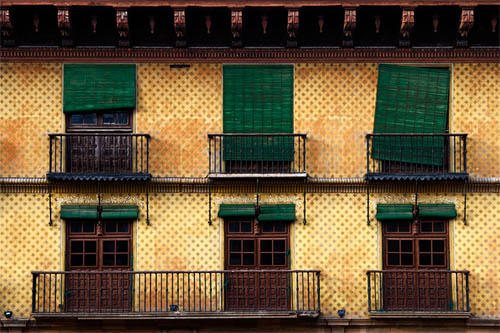When researching the history of Architectural photography I discovered that it is up for debate as to how long "Architectural" photography has been about. There are examples of work as early as 1839, using early photographic techniques, however it took until 1982 for the first collective of the genre to be published.
Architectural photography largely focuses on the beauty and intricacy of structures, rather than their purpose. However I think for advertising a place, this is just as important as showing a buildings function. A pleasant looking building certainly helps create a nice feel about a place, so if you can make the building look like a work of art, it certainly isn't to the detriment of the place.
This example above really has taken a fairly ordinary hallway and turned it into something special. The use of symmetry within this photograph is very clever, with two well placed figures at the top of the stairs just to unbalance the sides slightly. Strong complimentary colours create a good feel to the image, and all lines lead you down the corridor. All the rules of photography have been followed and the result turns what could have been a dull hallway into a fantastic image.
Another symmetrical image, using the wet ground to add another line of symmetry, horizontally through the image, has created an extra dimension to this image. The lines of symmetry is certainly a recurring theme I noticed within the genre, helping to really add to the majesty of buildings, but often it was there as a lot of buildings are designed symmetrically. This image has also made good use of a wide view to also add a dramatic sky to the image.
The removal of colour in this image has really helped convey the sense of shape, form, and texture in this image. The circles, and circular shapes of varying sizes, work together really well without the distracting element of colour, which probably would have made this image too much. By taking the photo from a low angle, the lines on the floor are emphasized, and the ceiling really looks much more grand and has a larger impact on the photograph.

